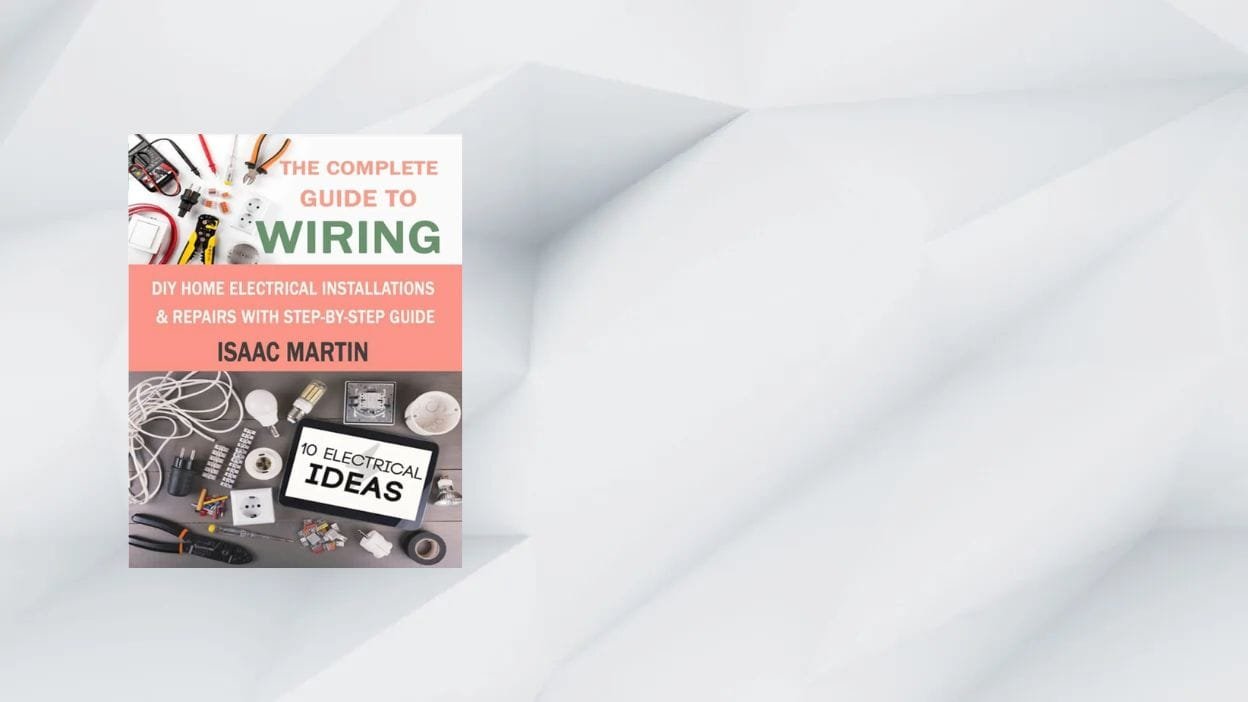Electric wiring keeps your lights on, your appliances running, and your home safe. The Complete Guide to Wiring: DIY Home Electrical Installations & Repairs With Step-By-Step Guide by Robert Sparkman is a concise 60-page manual that demystifies residential electrical work for beginners and savvy homeowners alike. First released via Amazon KDP in July 2020, this pocket-sized guide promises professional results—without the pro price tag.
Book at a Glance
| Title | The Complete Guide to Wiring: DIY Home Electrical Installations & Repairs With Step-By-Step Guide |
| Author | Robert Sparkman |
| Publisher / Year | Amazon Digital Services LLC – KDP Print US / Jul 17, 2020 |
| Length | 60 pages |
| ISBN | 9798666945087 |
| Format | Paperback & eBook |
| Audience | DIY homeowners, aspiring electricians, maintenance techs |
Why This Book Matters in 2025
- Back-to-basics clarity. Core principles—Ohm’s Law, circuit planning, safe isolation—are presented in everyday language.
- Step-by-step projects. From swapping a light fixture to installing a new outlet, each task is broken into bite-sized steps with clear photos.
- Compact & focused. At 60 pages, you won’t get bogged down in theory—you get just what you need to complete real-world repairs safely.
- Cost-saving DIY. Professional wiring labor can run $50–$100/hr. A simple home project following this guide can pay for itself in minutes.
Chapter Highlights
| Section | Focus | Key Take-Away |
|---|---|---|
| 1. Electrical Fundamentals | Voltage, current, resistance & circuit basics | Translate real circuits into safe, testable loops |
| 2. Tools & Safety | Essential tools, PPE, lock-out/tag-out | Always kill power and verify dead circuits |
| 3. Wiring Materials | Conductor types, cable ratings, connectors | Choose the right gauge and insulation for each circuit |
| 4. Lighting Installations | Fixture mounting, switch loops, three-way switches | Wire new lights without flicker or shock hazards |
| 5. Adding Outlets | Outlet types, box fill, wiring loops | Expand circuits safely with proper box sizing |
| 6. Dedicated Circuits | Appliances, sub-panels & heavy loads | Plan and wire ovens, dryers and EV chargers correctly |
| 7. Low-Voltage Wiring | Doorbells, thermostats, landscape lighting | Incorporate transformers and protection rules |
| 8. Troubleshooting & Repairs | Common faults, testing procedures, repairs | Use a multimeter to diagnose and fix wiring issues |
Strengths
- Ultra-concise – No fluff: every page delivers hands-on instructions.
- Visual guidance – Color photos and diagrams clarify each step.
- Beginner-friendly – Written for homeowners with zero prior experience.
- Portable reference – Slip the paperback or eBook on your phone for quick field checks.
Limitations
| Limitation | Impact | Work-around |
|---|---|---|
| US-centric code | References NEC; may not align with international standards | Cross-check with local electrical codes |
| No deep theory | Limited explanation of “why,” beyond “how” | Supplement with a full-length textbook if you crave depth |
| Basic tool list | Omits some specialized diagnostic gear | Invest in a quality multimeter and wire tracer separately |
How It Compares
| Feature | Sparkman (2020) | Black & Decker Home Wiring (6th Ed., 2019) | Wiring Complete (Home Depot, 2021) |
|---|---|---|---|
| Pages | 60 | 432 | 304 |
| Quick-start focus | ✔ | ✖ | ✖ |
| Code depth | NEC overview | Detailed NEC chapters | NEC abridged |
| Photos & diagrams | Color step-shots | Mixed color & line art | Full color |
| Best for | Fast DIY tasks | Comprehensive theory | Trade-prep & pro-DIY |
FAQ
Is The Complete Guide to Wiring good for absolute beginners?
Yes—no prior experience needed. The author even explains basic terms like “hot,” “neutral” and “ground.”
Does it cover electrical code requirements?
It references key NEC rules for safe practice, but you should verify final work against your latest local code.
Where can I buy or download it?
Available in print and Kindle editions from Amazon (ISBN 9798666945087)
Can this book help me install smart home wiring?
The guide covers standard low-voltage setups (doorbells, thermostats) but not advanced IoT devices; use it alongside smart-home manuals.

